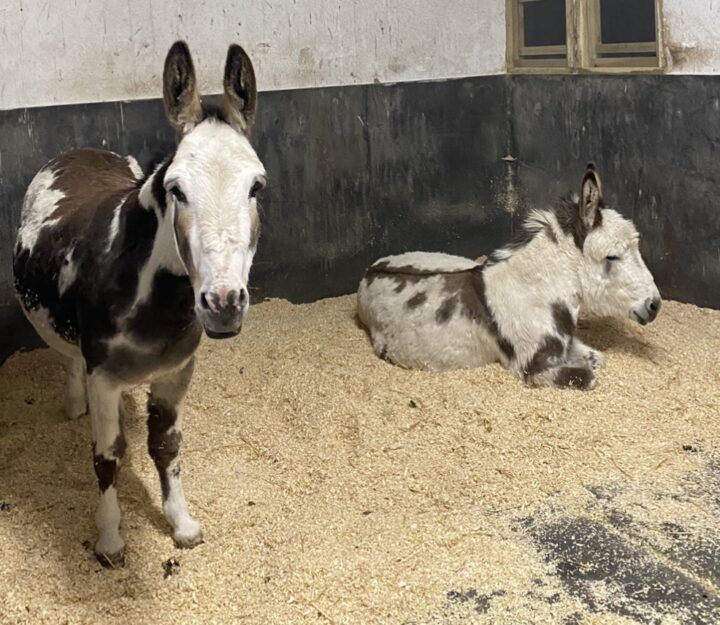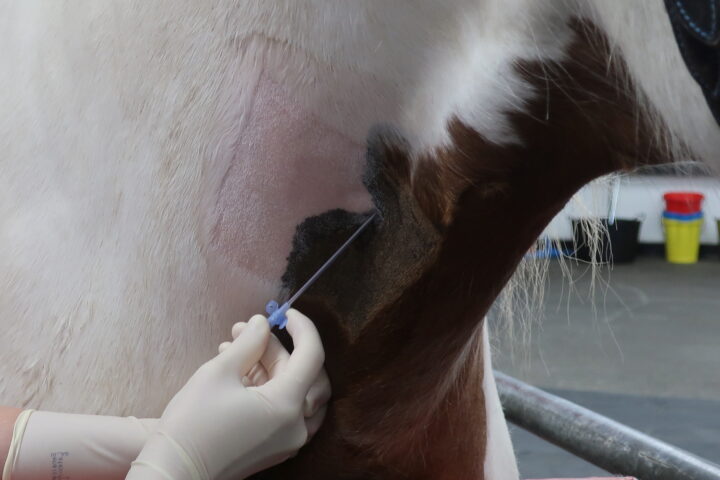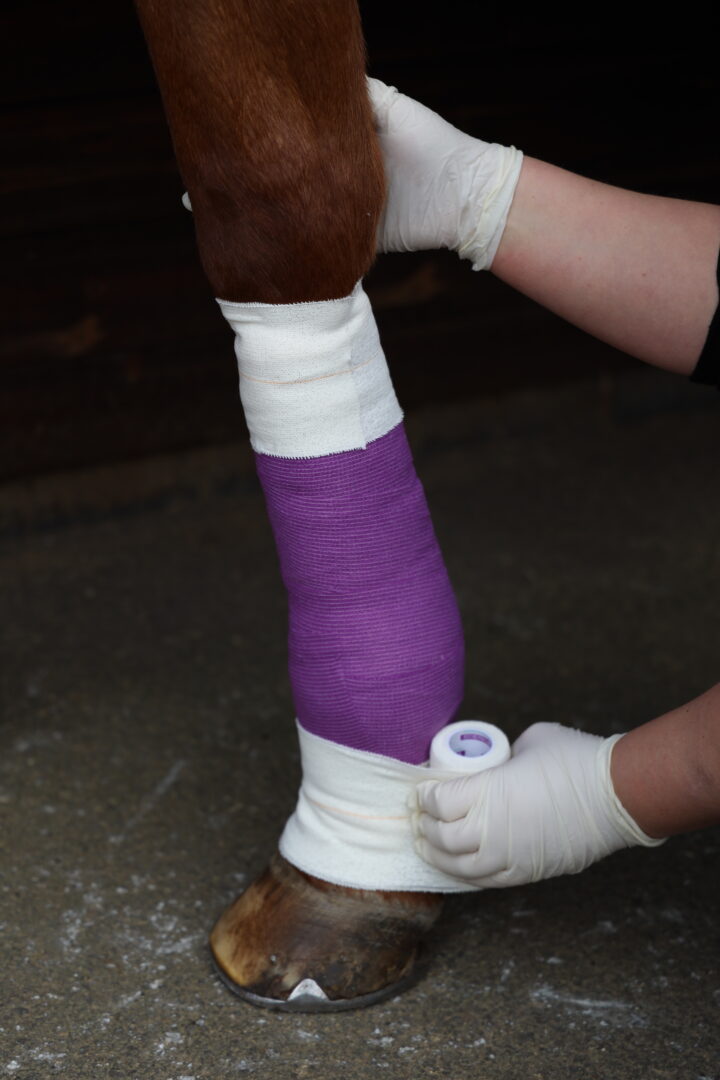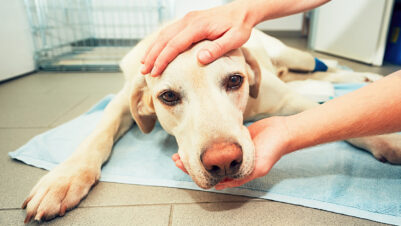Equine patients commonly require the provision of first aid and emergency veterinary treatment. This article will discuss the principles of first aid and emergency treatment and the role that equine registered veterinary nurses (RVNs) can play in preparing for and assisting with emergency veterinary care of equine patients. The learning objectives for this article are:
- To understand the role of the equine RVN in emergency and critical care cases
- To understand how to apply Schedule 3 of the Veterinary Surgeons Act 1966 to the role of the equine RVN
- To help vets to better understand the role of the equine RVN and delegate Schedule 3 tasks confidently
Equine first aid
First aid is the provision of initial care for an illness or injury. Within the Veterinary Surgeons Act 1966, dispensation is given for first aid to be carried out without veterinary supervision by an unqualified person in an emergency situation to save a life or relieve pain or suffering (Smith and Haylock, 2012). The key aims of first aid are to preserve life, prevent suffering, stabilise the patient’s condition and prevent further harm, and to promote recovery.
First aid differs from emergency veterinary treatment, and it is important to know the differences between the two. First aid can be carried out by a layperson; however, if a more qualified staff member is available, then this person should take the lead on first aid. Delegation to lay people, regardless of expertise, is at the discretion of the veterinary surgeon (RCVS, 2025). The provision of first aid may include techniques such as cold hosing, applying pressure to a bleeding wound, applying a basic bandage and moving the patient to a safe area.
In the UK, emergency veterinary treatment must be administered by a qualified vet holding current membership of the Royal College of Veterinary Surgeons (RCVS) or by an RVN under their direction. The Veterinary Surgeons Act 1966 (Schedule 3 Amendment) Order 2002 provides that veterinary surgeons may direct registered or student veterinary nurses (SVNs) whom they employ to carry out limited veterinary surgery. There is often confusion surrounding what RVNs can and cannot do within the remit of Schedule 3. The British Equine Veterinary Association (BEVA) has produced a set of guidelines to provide an interpretation of Schedule 3 of the Veterinary Surgeons Act and encourage more delegation of tasks to equine RVNs.
These guidelines are an important resource to help guide vets and RVNs to ensure that tasks are delegated correctly and safely, to ensure a fair distribution of workload and the allocation of an appropriate skill set for each task to be performed. Emergency veterinary treatment may include techniques such as placing an intravenous (IV) catheter and administering pain relief, antibiotics, sedatives and IV fluids (prescribed by the treating vet).
A proactive approach is essential, and the RVN must think ahead to facilitate the developing situation
Equine triage
Good triage skills are invaluable in situations where multiple emergencies arrive at once and need to be prioritised. Triage comes from the French word “trier”, which means to pick, choose or sort (Millar et al., 2025). Triage is something that RVNs may be required to perform in practice. For triage to be successful, information must be gathered from the patient’s history and initial clinical examination. The emergency can then be allocated to one of the two following categories:
- Severe life-threatening emergency: these emergencies involve significant disturbances in the major body systems where there is a potential for rapid deterioration or death, for example a surgical colic or a patient with atypical myopathy
- Minor emergency: these patients will need to be dealt with on an emergency basis; however, their assessment and treatment can be delayed until patients with a severe life-threatening emergency have been treated. Examples of minor emergencies include problems such as minor wounds and mild diarrhoea
Emergencies for which an examination by a vet should be advised without delay would include but are not limited to (Millar et al., 2025):
- Colic
- Non-weight-bearing lameness
- Fracture
- Severe bleeding
- Respiratory distress
- Collapse or unconsciousness
- Sudden onset of severe neurological abnormalities
- Severe diarrhoea
- Extreme pain
- Acute laminitis
- Significant wounds
- Puncture wounds
- Dystocia
- Sick foal
- Dull, unusually quiet or sick donkey
The role of the RVN when assisting in an emergency
When dealing with any acute emergency, the RVN will play a significant role within the veterinary team. Safety of the RVN, other colleagues, the patient and the client should be of primary importance in any emergency situation. Personal protective equipment (PPE) in the form of a hard hat, steel-toe-capped boots and gloves should be worn at all times when handling horses during an emergency situation. The room should be cleared of any unnecessary personnel, including the client if it is not deemed safe for them to be present. Patient safety should also be considered, with sedatives and analgesics to be prescribed by the vet and administered without delay if appropriate. The patient should be handled carefully and put in a set of stocks if required. Extra restraint, such as a bridle, should be considered if a headcollar does not give enough control.
A proactive approach
The RVN should be familiar with the equipment and medication that are likely to be required and have this ready and easily accessible. A proactive approach is essential, and the RVN must think ahead to facilitate the developing situation (Smith and Haylock, 2012). This approach may include preparing an intensive care stable for the patient following the initial assessment. In this case, factors such as heating, comfort and the provision of appropriate food and fluid should be considered.
Consider species needs
The type of patient being admitted should also be considered. Donkeys, for example, will have different requirements to horses. Donkeys form strong bonds with their companions and should always be admitted in bonded pairs as a minimum (Figure 1). Donkeys also have different dietary requirements to horses and ponies, and these should be catered for either by sourcing specific feed stuffs, such as barley straw, or by asking the owners to bring forage and feed in from home.

Schedule 3 delegation
From a clinical point of view, appropriate Schedule 3 procedures should be delegated to the RVN to allow the whole team to function as effectively as possible. Schedule 3 procedures are carried out under the direction of the vet and can include but are not limited to: working out doses for medication (prescribed by the case vet) and administering them as directed; placing IV catheters (Figure 2) and starting IV fluids (prescribed by the vet); taking blood samples; passing a nasogastric tube for the administration of fluids/feed or the retrieval of reflux; suturing and repair of superficial wounds; and the application of appropriate dressings and bandages (Figure 3).

RVNs can also obtain diagnostic images through radiography, computed tomography (CT), scintigraphy and/or magnetic resonance imaging (MRI), which can be used by the vet to make a diagnosis. The RVN may also be required to assist in theatre in several roles, which include, but are not limited to, scrubbing in to assist with the surgical procedure, acting as a circulating nurse, and maintenance and monitoring of the anaesthetic within the scope of Schedule 3.
Organisation of the situation, people and equipment
As well as carrying out clinical procedures, the RVN may have a role in the organisation of the general area. This may include managing people and equipment, keeping track of sharps, and ensuring the health and safety of the patient and all staff members. The RVN may also take on the role of record-keeping during emergency procedures. This will include recording clinical parameters, pain scores, details of medication administered, timings for procedures and, if required, filling in the anaesthetic record. Accurate record-keeping is essential for the case vet to use as a reference and for the practice to use in the case of litigation (Smith and Haylock, 2012).
Accurate record-keeping is essential for the case vet to use as a reference and for the practice to use in the case of litigation

Client communication
The RVN may also take a significant role in communicating with the client in an emergency situation. RVNs have good communication skills and an understanding of empathy and the human–animal bond. Showing kindness and understanding to clients during stressful situations can make them feel more at ease, build a bond of trust which can help to reduce anxiety, and increase concordance with any ongoing treatment plans. It is a good idea to invite clients to sit in a quiet waiting room and offer them a warm drink and a biscuit while their horse is being treated. Clients will appreciate this gesture, along with any time spent explaining the situation and listening to their concerns.
Civil emergencies
There is also a role for equine RVNs in emergency and rescue scenarios in response to civil emergencies. BEVA has produced a set of guidelines in collaboration with the British Animal Rescue and Trauma Care Association (BARTA) on the role of the equine RVN in veterinary response to civil emergencies.
Conclusion
RVNs are proactive and dynamic members of the veterinary team with a varied skill set, which makes them an asset when dealing with emergencies. RVNs can take on many roles during an emergency situation, including client communication, triage, preparation of the required areas of the practice, preparation of relevant equipment, carrying out Schedule 3 procedures, and managing people and the immediate environment to ensure the safety of all involved. RVNs use their varied skill set to ensure high levels of care for clients, colleagues and most importantly the patients in their care.











